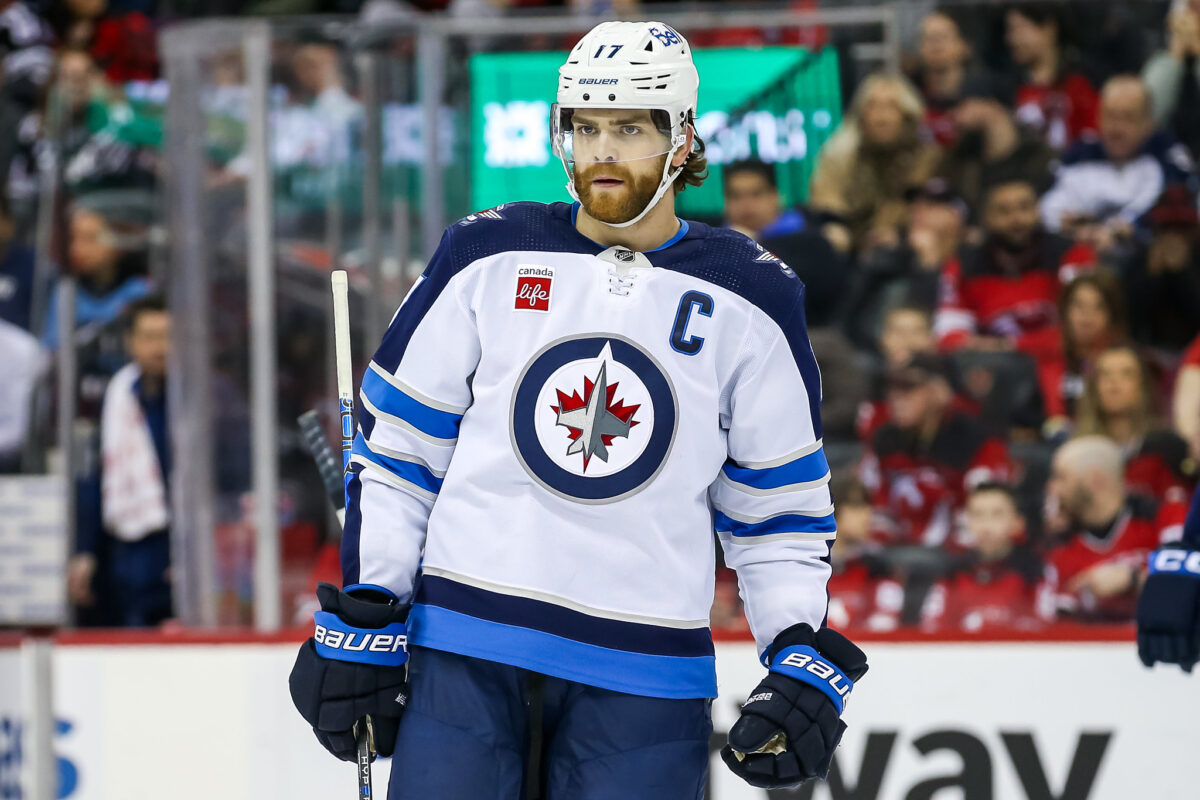The Winnipeg Jets, in the 2024-25 season, will attempt to replicate the regular-season success they had last campaign despite some key losses in free agency. If they qualify for the postseason, they’ll also attempt to win a playoff series after two-straight first-round exits.
With training camp, preseason, and opening night all getting closer with each passing day, it’s worth taking a look at who might lead the team in various important statistical categories. Some leaders will likely be the same as last season, while others will top categories for the first time.
Goals: Kyle Connor
Kyle Connor has led the Jets in goals in five of the past six seasons, including last season with 34 despite missing 17 games with a knee injury. There’s little reason to believe the 27-year-old sniper — who has six 30-plus goals seasons and is closing in on 500-career points — won’t lead the Jets in this category again.

Like in past seasons, he’ll play top-line and top power-play roles and it’s quite impressive how quickly the left winger can create a dangerous scoring chance out of seemingly nothing and score from many different points on the ice in different ways.
Assists: Josh Morrissey
Morrissey, ever since he was encouraged and empowered by now-retired head coach Rick Bowness to jump up in the play and produce more offense, has become a dish master from the blue line.
The now-29 year old led the team in apples in each of the past two seasons, with 59 last season and 60 in 2022-23. Considering he had 12 more than Mark Scheifele last season, 11 more than Connor in 2022-23, and that he’s cemented himself as one of the NHL’s elite offensive defenceman, we feel confident predicting Morrissey three-peating as assists leader.
Points: Mark Scheifele
The Jets had a balanced offense last season, so Scheifele’s team-leading 72 points is a fairly modest figure as far as team-leading point-getters go (he was tied for 46th league wide in points.)
Last season was the first time since 2016-17 Scheifele led the team in points (he tied for the team lead in 2019-20 with Connor) but the Jets’ top-line centre has become a known commodity who operates at about a point-per-game clip. He has 717 in 797-career games and has six point-per-game-plus campaigns under his belt.
He didn’t quite get there last season with 72 points in 74 games, but there are a couple factors to believe his production might ramp up in 2024-25 and that he’ll repeat as the team’s point leader in the first season of a seven-year extension he signed last October.
Related: Jets’ Stanley Cup Checklist Check-In
Connor is becoming more of a complementary piece to the Jets’ offense rather than a play driver and new head coach Scott Arniel might opt to break he and Scheifele up, something Bowness was reticent to do despite the duo often getting caved in at even strength. Also, with Sean Monahan’s departure in free agency, the Jets are not as deep up the middle as they were last season.
While there are a few strong candidates for the second-line centre spot vacated by Monahan, any struggles by that line could pave the way for increased ice time for Scheifele’s top line. He led the team in points despite not leading them in goals or assists last season, so there’s precedent for that.
Power Play Goals: Gabriel Vilardi
Vilardi, a net-front wizard, showcased last season a skillset Winnipeg has not seen in a long time or perhaps ever. Nearly all of his goals, including a team-leading nine power-play tallies, came from within a foot of the net and were thanks to his uncanny awareness and stick-handling skills in tight. As Adam Lowry put it, Vilardi can “stick handle in a phone booth” (From ‘Up close: an in-depth look at Gabe Vilardi’s goalscoring exploits,’ Winnipeg Free Press, April 5, 2024.)
The Jets’ power play, which suffered long stretches of futility last season and finished 22nd in the league, was a lot better when Vilardi was parked in front of opposing goaltenders. He had three more power play goals than the second-placed Scheifele despite missing 35 games with various injuries and an enlarged spleen. A couple of his markers were downright filthy, such as the one above.
Related: Winnipeg Jets’ Top 5 Goals of 2023-24
If Vilardi can stay healthy all season, is a top power-play unit mainstay under Arniel, and the regime improves under new assistant coach Davis Payne, Vilardi could have 15-plus power play markers by the time the campaign is through.
Hits: Neal Pionk
Neal Pionk is not a huge guy at 6-feet and 186 pounds, but he’s a tough customer who plays like a small truck and can dish out a big hit or two (he’s also somewhat of a hip-check specialist.) The defenseman has cited “growing up with four brothers, probably,” as the origin of his feistiness (from ‘Pionk picks his spots,’ Winnipeg Free Press, March 13, 2024.)
Last season, Pionk racked up 221 hits in 82 games, a career high and second on the team to Brenden Dillon’s 241. Dillion’s departure in free agency should pave the way for Pionk to lead the Jets in hits for the first time, especially if he’s still deployed in a top-four role. Also playing to Pionk’s advantage is his historic durability: he has missed just five games in six seasons with the Jets and didn’t miss a game over the past two campaigns.
Penalty Minutes: Adam Lowry
Lowry never shies away from the physical aspect of the game, and his willingness to throw his weight around and make life difficult for his opponents are two of the things that have made him an effective third-line centre and compelling captain.
The Jets’ second-ever draft pick is not a goon by any means, but is willing to do anything to demonstrate his dedication and leadership, and sometimes that means dropping the gloves in defense of a teammate. With Dillon gone, he might have to do that a little more often.

Dillon and Lowry tied for the team lead in fights last season with seven each, and the Jets didn’t add anyone over the offseason considered an enforcer. Lowry finished tied for third on the team with 57 PIMs last season, well behind Dillon’s 93 (15 of Dillon’s PIMs came in a single game where he was ejected for an illegal check.)
This season, Lowry could have closer to Dillon’s number from last season, both due to just being someone who plays with sandpaper and potentially having to pick up the fisticuffs slack. However, fighting’s prevalence in hockey has certainly waned and he shouldn’t be looking for fights for no reason.
Average Time on Ice: Josh Morrissey
As we covered above, Josh Morrissey has evolved into a bona fide top-pairing defenseman, and he’ll be leaned on as such again this season.
With the Jets’ defense in somewhat of a state of flux with Dillon’s and Nate Schmidt’s departures, the one constant Arniel will be able to depend on is the Morrissey/Dylan DeMelo pairing.
Last season, Morrissey averaged a team-leading 24:11 of ice time per game, more than two minutes higher than DeMelo’s 21:44, mostly due to also being on the top power-play unit. Morrissey also led the team in ice time per game in 2022-23 with 24:14, in 2021-22 with 23:40, and in 2020-21 with 23:33. He should easily lead in this category for the fifth-straight season.
Plus/Minus: Dylan DeMelo
Dylan DeMelo, entering the season with a fresh four-year contract extension in his pocket, has been an analytical darling for a long time and is one of the NHL’s best defensive defensemen. Simply put, when he’s on the ice, his team gets a lot more goals than the opponent, and that should continue in 2024-25.
Plus/minus can be a misleading stat, or at times, even a pointless one because there’s a lot that goes into a players’ rating the player himself can’t actually control (quality of defensive partner, how the coach deploys them, and quality of the goaltender behind them among them.) However, when someone’s plus/minus looks like a video game number, you know they’re doing something right.
That was certainly the case with DeMelo, who had a team-leading plus-46 rating last season, 12 points better than the second place Morrissey and second in the entire NHL to only the Florida Panthers’ Gustav Forsling’s plus-56.
With the focus on stout defense Arniel and Bowness worked to establish over the past two seasons set to continue to be a major focal point under Arniel and his new assistants — and with DeMelo proving he can provide some decent offensive numbers — there’s no reason to think DeMelo’s plus/minus won’t be gaudy again.
Save Percentage and Goals Against Average: Connor Hellebuyck
Funnily enough, the 2024 Vezina Trophy winner didn’t even lead his own team in save percentage (SV%) or goals against average (GAA), as backup Laurent Brossoit’s .927 SV% and 2.00 GAA were better than the starter’s .921 SV% and 2.39 GAA (albeit in a much-smaller sample size as Brossoit made 22 starts to Hellebuyck’s 60.)
However, with arguably the NHL’s best backup last season in Brossoit gone, Hellebuyck will return to the top of both categories as long as he plays to a similar quality as last season. Eric Comrie and Kaapo Kahkonen, the two goaltenders brought in to battle for the backup position this season, simply aren’t of the same calibre Brossoit is and won’t post the numbers he did. (However, Comrie, in his previous stint with the Jets in 2021-22, had a better SV%, .920, than Hellebuyck, who had a .910 clip in what was a down season by his standards.)